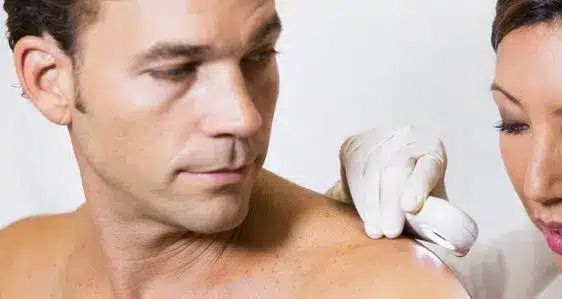
Medical Dermatology
- Lesion Removal
- Rashes
- Acne
- Rosacea
- Eczema
- Dermatitis
- Skin Infections
- Psoriasis
- Alopecia
- Nail Disorders
UV-A & UV-B Protection
The American Academy of Dermatology recommends the following:
- Broad-spectrum protection (protects against UV-A and UV-B rays).
- Sun Protection Factor (SPF) 30 or greater.
- Water Resistant Sunscreen
Protection
- Wear a wide-brimmed hat and sunglasses when outdoors
- Wear sun protective clothing: tightly woven loose-fitting clothing, such as long-sleeved shirt and pants.
- Avoid sun exposure in the middle of the day (10AM – 3 PM)
- Avoid tanning beds, which photo-age the skin.
Application
- Apply generously to coat all skin that will not be covered by clothing.
- About one ounce is considered the amount needed to cover exposed areas of the body.
- Apply to clean, dry skin 30 minutes BEFORE exposure to the sun.
- Re-apply sunscreen frequently, at least every 2 hours, especially after swimming and sweating even if waterproof. Follow according to the directions on the bottle.
When Do I Use It?
- You should use sunscreen everyday! The sun emits UV rays all year round.
- No shadow….… seek the shade! If your shadow is shorter than you are, the sun’s rays are at their strongest.
- Cloudy days- UV rays can still penetrate your skin. Up to 85% of UV rays can pass through the clouds.
- Avoid reflective surfaces (water or sand), which can reflect up to 85% of the sun’s damaging rays
Who Should Use It?
- Everyone! People of all skin colors get skin cancer.
- Children and Babies- Protect children: minimize sun exposure by having children wear hats and protective clothing and apply sunscreen to children aged 6 months or older
*In general, the most effective sunscreens are rated SPF 50 or higher and contain at least 3 % Avobenzone (also called Parsol 1789) and/or 2 % Mexoryl (Ecamsule). Sunscreens containing Titanium dioxide or Zinc oxide are also good UV blockers, but not quite as effective against UVA. Apply the sunscreen 30 minutes before sun exposure and every 2 hours thereafter while you are in the sun, more often if you are swimming or sweating.


